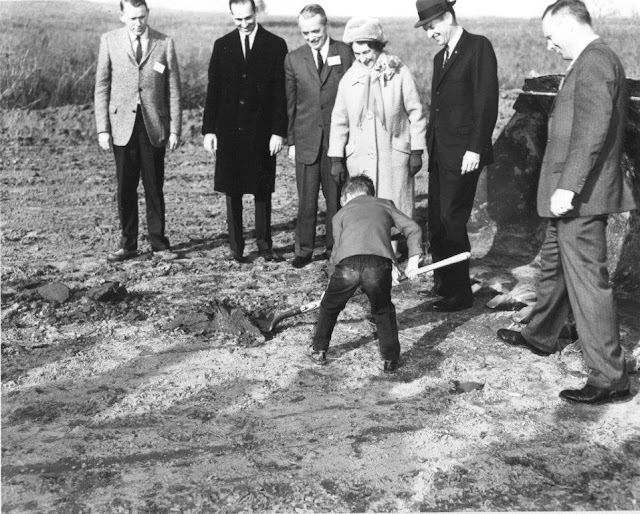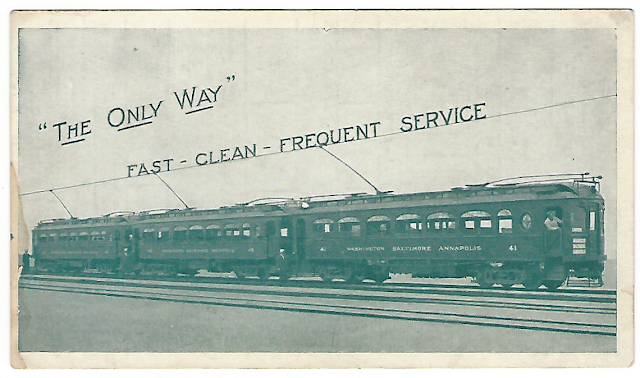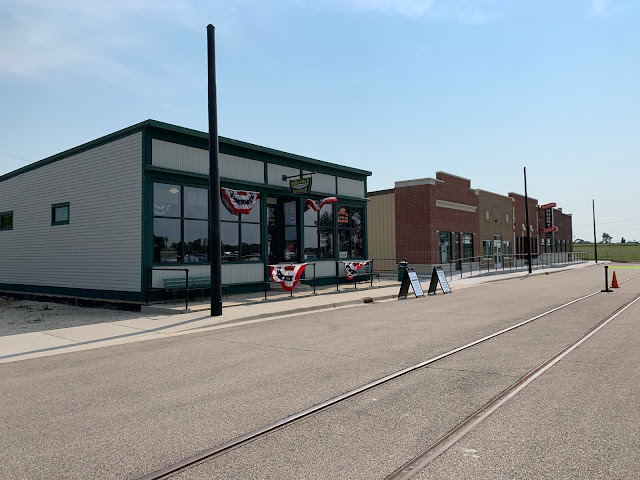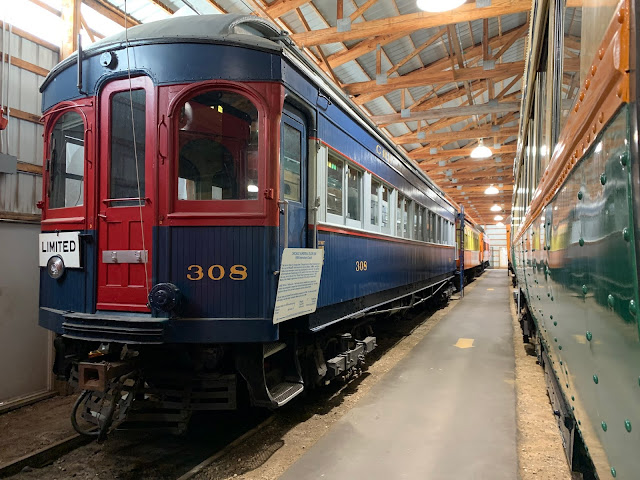GOLD ANNIVERSARY AT NCTM – TARS 678
TTC 4603 & TARS 678 (Silver and Gold Jubilee, respectively) at the NCTM Visitor Center; January 18, 2015; Photo: H. van der Lee; NCTM collection
In Part II of our Anniversary series we are focusing on TARS 678 (New York City) which arrived at our Museum 50 years ago (August 1971). At a time (late 1930’s) that many North American cities were already embracing the PCC design for their new streetcars (including Washington DC), the Third Avenue Railway System (TARS) in New York City decided to build streetcars in-house from recycled parts using a mostly traditional design. However, TARS did incorporate some new design features, such as a foot-operated brake pedal with dead-man control function built-in, and a low-voltage battery circuit to ensure power for some safety features in case the car would become disabled. In this article we will provide a brief history of our Gold jubilee TARS 678.
Early life in New York City (1939-1949)
TARS 678 was built in 1939 in the TARS shop on 65th Ave as part of a series of 60 front-entrance, rear-exit cars, named “Z-cars”. The cars were assigned to the Tremont Ave and Southern Blvd lines in the Bronx and ran there until June 1947 when streetcar service on those lines was converted to bus operations. The relatively new series of streetcars was put in storage, until a year later, in late 1948, a new opportunity presented itself for 42 of the cars, including the 678.
TARS 678 on Tremont Ave in the Bronx; August 22, 1948. Photographer unknown; NCTM collection
TARS 678 on Southern Blvd line in 1940; Photographer J.McMahon; NCTM collection
Second life in Vienna (Austria) (1949-1971)
After the end of World War II many European cities were in need of rebuilding their streetcar networks. Severe car shortages lead to an inability to provide the necessary transportation services, and in general they lacked the financial and infrastructural means to build new streetcars in a timely manner. Vienna was hit particularly hard: more than half of its streetcar fleet was either destroyed or severely damaged. The surplus TARS cars in New York presented a potential solution to Vienna’s shortage, and after successful negotiations 42 of the cars were sold to Vienna, using funds from the post- war Marshall Plan for their purchase. They were shipped to Vienna in the summer of 1949, but operations using the cars did not begin until March 1950, because significant refurbishing was needed. This included a new paint scheme, installation of a pantograph, and a rearrangement of door controls due to the two-man operation that was in use in Vienna. It has been reported that when the Z-cars arrived the Austrian engineers had trouble understanding some of their technical aspects; as a result, two of the delivered streetcars had to be taken apart before the cars could be made suitable for service in Vienna.

An "Amerikaner" on line 331 at the Stammersdorf terminus; October 1, 1963; Photo: Wiener Linien
“Our” TARS 678 was renumbered as Wiener Stadtwerke (WS) 4220 and was put in service on September 1, 1950. The Z-cars, nicknamed “Amerikaner” (Americans) by the public, had a few, unfamiliar features, including pneumatically operated doors with retractable doorsteps, and reversible, cushioned benches. The passengers greatly appreciated the cars for their smooth ride. However, since the cars were wider than Vienna's regular streetcars, they could only run on certain lines, mostly in the more suburban areas surrounding the city. Their first appearance was on the line to Stammersdorf (a small village northeast of Vienna); they eventually ran on six different lines on Vienna’s streetcar network, and remained in service for nearly twenty years. They were taken out of service on September 5, 1969, when the last “Amerikaner” streetcars retired. A few of the Z-series cars have been preserved in museums in Europe and North America.
Life at NCTM: Fifty years (1971 – 2021) and counting….
The National Capital Trolley Museum was fortunate in being able to purchase WS 4220 (ex-TARS 678) in 1970 as part of a package deal, freshly painted in red and cream, and including spare parts. It arrived at NCTM, in its Viennese livery complete with pantograph, on August 20th, 1971.
WS 4220 arrival at NCTM; August 20, 1971. Photographer: Mills Dean; NCTM collection
NCTM Museum member Gil Stimson recalls:
50 years ago, August 20, 1971, I remember that date, as if it was just last month.
That photo of #678 loaded on one trailer and its trucks loaded on the second jogged my memory. There was a fourth track that began from a track switch installed in front of the original car barn from the third track farthest from Bonifant Road. It was not under wire and was long enough to hold all four ex-D.C. Transit streetcars cars donated by then DCT President O. Roy Chalk in March of 1970.
Those two trailers were positioned parallel to that track, in front of the car barn, close to that track switch. That track was not under wire. The crane was positioned mid-trailer with the trailer between the crane and the track the trolley car was to be lowered on to. The plan was to unload the trucks, first, and position them spaced apart, so the body bolsters would line up when the streetcar body was lowered on top of the trucks. Then, the car would be towed into the yard lead by another museum car, under wire, and pushed into the barn, on one of the three tracks.
The third track farthest away from Bonifant Road would have been the logical choice, since it would require the fewest number of moves and was the closest powered (under trolley wire) track to the unpowered track (no trolley wire). For safety reasons this was done to prevent the crane boom from coming in contact with the trolley wire. The trucks were unloaded on to the rails, positioned and that trailer was pulled away. The trailer with the car body was positioned parallel to the trucks, the body was lifted from the trailer and that trailer was pulled away. The crane’s lifting capacity was not enough to allow the crane to lower the car body on to the trucks. The crane was straining just to hold it in place. If the crane lost hydraulic pressure, the car body would drop to the ground faster than expected! A tie crib was quickly constructed with track ties placed at right angles on each side of each body bolster. The car body was lowered on to the crib. The trailers and the crane had already lefty the museum property.
A crane with a larger lifting capacity was requested, but would not arrive at the museum until the next morning. With memories of the D.C. Transit Silver Sightseer fire, the previous September, still fresh in everyone’s mind, I volunteered to be the night watchman and spent the night on #678. I had a transistor radio, camping lantern (electric), a four “D” cell flash light and dinner from McDonald’s.
Around 9:00 AM on August 21, 1971, a larger crane (about 3X larger) arrived and lifted the car body from the tie crib without effort. The trucks were quickly repositioned and the car body lowered onto the trucks. The crane left, as quickly, as it had arrived. #678 was moved into the car barn without incident.
Not everyone can say that they have spent an entire night in a Third Avenue Railways System streetcar completely sober. But, intoxicated riders probably slept off a night of hard drinking, when that car was in-service, in the Bronx.
In the September 1971 issue of the NCTM Newsletter an announcement is made that an inauguration ceremony for the car would be held on October 10, 1971. The ceremony would be attended by Herr Dr. Hans G. Rudofsky, Counselor of the Embassy of Austria and his six-year old son Rupert, in the presence of the “Modelling Moppets, representing the children of the United States; they are a group of young ladies aged four to twelve years old who are pupils in modeling grace and social etiquette” at Katherine Mizell’s School in Bethesda”. Unfortunately, no further information on this event, including photographs, have been found to-date.
WS 4220 at NCTM; June 1972; Photo: J. Hilton; NCTM collection
WS 4220 at NCTM; 1972; Photographer unknown; NCTM collection
In 1974 the car was given a Bicentennial color scheme with a blue banner above the windows, a white window section, and red below the windows. Small American flags and special lettering were placed on the sides and front ends of the car. A dedication ceremony the “Bicentennial car” was held on August 25, 1974, in the presence of several dignitaries, including Mr. Achilles M. Tuchtan (Chairman of the Montgomery County Bicentennial Commission), Thomas R. Anderson, Jr (Park Commissioner and Head of the Montgomery County Historical Society) and U.S Representative Gilbert Gude.
Inauguration of “Bicentennial car” 4220; August 25, 1974; Photographer unknown; NCTM collection
WS 4220 in Bicentennial Color scheme at NCTM in 1980; Photo J. Salomon
In the late 1980’s the paint scheme on the car was “refreshed” with a new coat of paint while removing the (by then) “dated” bicentennial markings. The restoration aimed at returning the WS 4220 to its original New York City appearance as TARS 678 was started in 1993 after the car made its final revenue run as WS 4220 in the Spring Parade. This extensive restoration included replacement of the roof, replacement of the badly rotted trolley boards and removal of the pantograph platform, painting the body of the car, replacing window grommits, installation of rattan seats, and working on the trucks and undercarriage.
Transformation of WS 4220 to TARS 678 in progress. Photos: Collection Ken Rucker
The restoration was completed in January 2015 when the car (as TARS 678) was placed back in service. On January 18, 2015, a small dedication ceremony was held to celebrate the successful restoration – the third since the car arrived at the Museum.
Ribbon cutting of newly restored TARS 678 by Larry Gaul, son of Dave Gaul, was a board member and former treasurer, and the lead worker on TARS 678 for many years prior to his death. Jan 17, 2015. Photo: H. van der Lee; NCTM collection
One fun fact about TARS 678 is remembered by Wesley Paulson: One of my memories of TARS 678 was operating with a bluegrass music trio on the platform. When we acquired the car it had long leather standee straps the length of the car on each side of the center aisle. Depending on car speed and track conditions, the straps would sway in unison. This was the case when the trio was on board, with swaying straps and passengers clapping to the beat of music. If any of our readers has other special memories or information about TARS 678 we invite you to share them with us via the contact from at the bottom of this page.
TARS 678 on its first day of service post-restoration; January 18, 2015; Photo: H. van der Lee; NCTM collection
Currently TARS 678 is undergoing a maintenance project aimed at repairing an oil leak issue. We look forward to bringing the car back in service, and to its next 50 years at the Museum!
--
Sources:
NCTM archives
NCTM Newsletters August & September 1971
No. 4220 - Roadway to Stammersdorf, by John E. Merriken; NCTM publication, 1974
National Railway Bulletin, Vol 43 No. 6, 1978
Wesley Paulson, John Novack, Gil Stimson, Vernon Winn, personal communications.
Vienna, Austria New York TARS Streetcars; https://www.nycsubway.org/wiki/Vienna,_Austria_New_York_TARS_Streetcars
The Americans in Vienna's Streetcar Network; H. Richter; https://www.austrianinformation.org/fall-2015/the-americans-in-vienna






















































